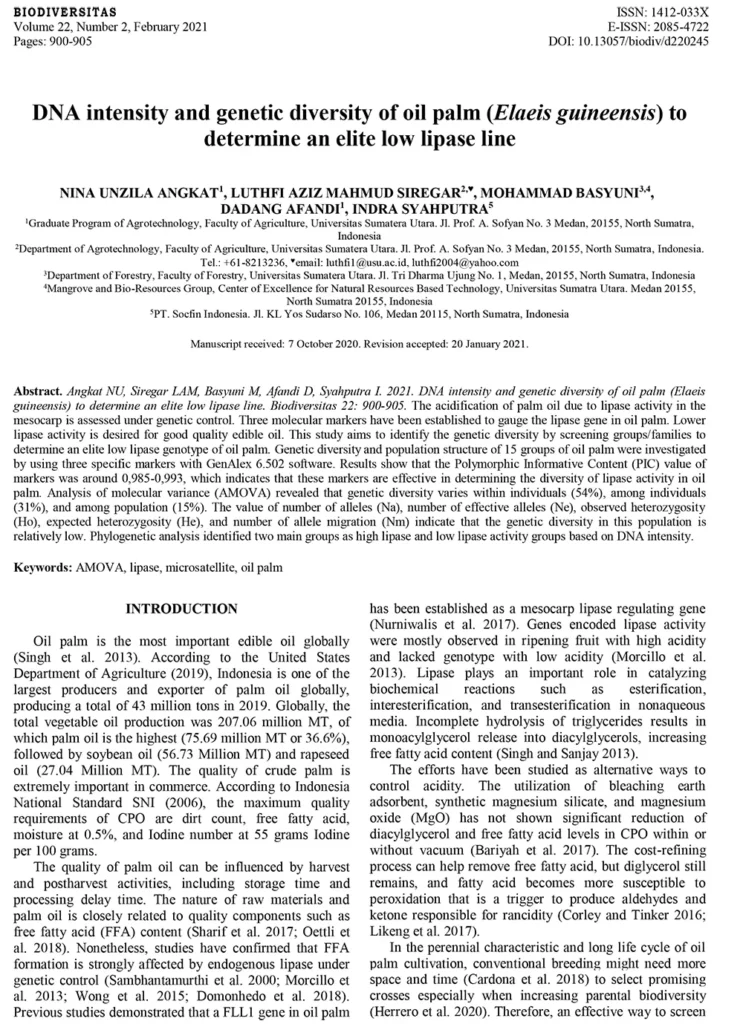DNA intensity and genetic diversity of oil palm (Elaeis guineensis) to determine an elite low lipase line. Biodiversitas 22: 900-905. The acidification of palm oil due to lipase activity in the mesocarp is assessed under genetic control. Three molecular markers have been established to gauge the lipase gene in oil palm. Lower lipase activity is desired for good quality edible oil. This study aims to identify the genetic diversity by screening groups/families to determine an elite low lipase genotype of oil palm. Genetic diversity and population structure of 15 groups of oil palm were investigated by using three specific markers with GenAlex 6.502 software. Results show that the Polymorphic Informative Content (PIC) value of markers was around 0,985-0,993, which indicates that these markers are effective in determining the diversity of lipase activity in oil palm. Analysis of molecular variance (AMOVA) revealed that genetic diversity varies within individuals (54%), among individuals (31%), and among population (15%). The value of number of alleles (Na), number of effective alleles (Ne), observed heterozygosity (Ho), expected heterozygosity (He), and number of allele migration (Nm) indicate that the genetic diversity in this population is relatively low. Phylogenetic analysis identified two main groups as high lipase and low lipase activity groups based on DNA intensity.
DNA intensity and genetic diversity of oil palm (Elaeis guineensis) to determine an elite low lipase line
DNA intensity and genetic diversity of oil palm (Elaeis guineensis) to determine an elite low lipase line
Facebook
Twitter
LinkedIn
WhatsApp

Authors:
Nina Unzila Angkat, LUTHFI AZIZ MAHMUD SIREGAR, Mohammad Basyuni, Dadang Afandi, INDRA SYAHPUTRA
